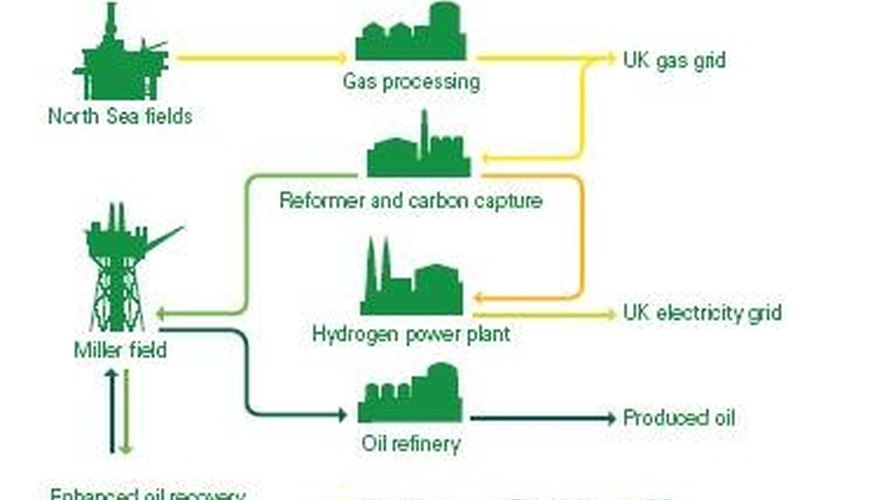
What is a Hydrogen Power Plant?
A
hydrogen power plant is a concept design for a new widespread source of
electricity. Essentially, it is a facility which uses hydrogen to
produce electrical energy. It is being proposed that a large facility,
not unlike a nuclear power plant in appearance, be constructed in the
city of Peterhead, Scotland. Plans were first laid by GE in 2006;
however, the logistics of supplying the power plant has delayed its
construction. The cost involved with obtaining the hydrogen means that
the overall cost of hydrogen-based electricity will be greater than that
of current nuclear and petroleum-produced electricity.
How Does a Hydrogen Power Plant Work?
Large
tanks of liquid hydrogen will feed into thousands of hydrogen fuel
cells. These fuel cells are solid structures containing an electrolyte
fluid and two terminals, much like batteries. The reactants flow into
the cells, in this case hydrogen and oxygen. They intermingle with the
electrolyte to produce an electrical charge and water as a byproduct.
The water flows out another port while the electricity is siphoned off
the terminals and held in gigantic multi-ton batteries. The electricity
resides in the batteries until it is needed, in which case it is sent
out through the local power grid just like any other type of power
plant. In theory, this could be a near perfect source of energy as it
has no dangerous byproducts and is just as fuel-efficient as the average
internal combustion engine. The biggest problem is, and always has
been, obtaining cheap supplies of hydrogen.
How Will The Hydrogen Be Obtained?
The
reason this first hydrogen power plant is to be constructed in Scotland
is because it is near the North Sea, where the Sleipner Field is found.
This is a massive field of natural gas being worked and refined by the
Norwegian company StatoilHydro. Natural gas can be processed into
hydrogen with the greatest cost and energy efficiency with about 80% of
the potential energy from the natural gas being retained in the form of
hydrogen. This is done by a process called steam reforming. The natural
gas is cooked at temperatures over 1,000 degrees Celsius and combined
with water vapor. The result is hydrogen and carbon dioxide. The
hydrogen can be harvested, bottled, and condensed into liquid for easy
transport, while the carbon dioxide can be disposed of by re-injecting
it back into the natural gas reservoir.






No comments:
Post a Comment